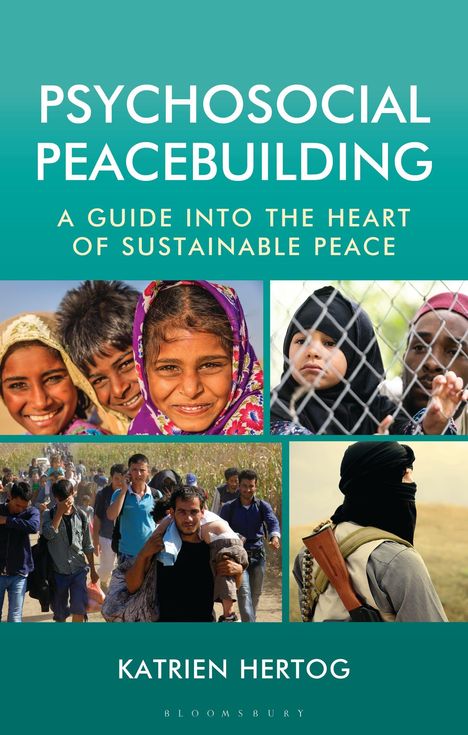Katrien Hertog: Psychosocial Peacebuilding, Gebunden
Psychosocial Peacebuilding
- A Guide Into the Heart of Sustainable Peace
Sie können den Titel schon jetzt bestellen. Versand an Sie erfolgt gleich nach Verfügbarkeit.
- Verlag:
- Bloomsbury Academic, 02/2026
- Einband:
- Gebunden
- Sprache:
- Englisch
- ISBN-13:
- 9798216368403
- Artikelnummer:
- 12484436
- Umfang:
- 336 Seiten
- Gewicht:
- 454 g
- Maße:
- 254 x 178 mm
- Stärke:
- 25 mm
- Erscheinungstermin:
- 19.2.2026
- Hinweis
-
Achtung: Artikel ist nicht in deutscher Sprache!
Weitere Ausgaben von Psychosocial Peacebuilding |
Preis |
|---|---|
| Buch, Kartoniert / Broschiert, Englisch | EUR 57,46* |
Klappentext
What if sustainable peace really starts within the human heart and mind?
Psychosocial Peacebuilding places the lived experience of individuals at the center of peace efforts. This timely and engaging book offers a clear, practical, and inspiring guide to understanding and applying psychosocial approaches to peacebuilding theory and practice. It provides both a much-needed conceptual framework to understand and address the broad range of psychosocial factors that shape conflict dynamics and peacebuilding outcomes, and hands-on tools drawn from more than 25 years of global field experience. It looks at how conflict affects psychosocial realities, and how those realities, in turn, influence the trajectory of peace or violence.
Dr. Katrien Hertog explores the what, why, how, and who of psychosocial peacebuilding through case studies, scientific insights, lived experiences, and practical exercises. She introduces an integrated model developed by the International Association for Human Values (IAHV) and the Art of Living as a rare example of a conceptual framework for psychosocial peacebuilding that uses evidence-based practices and is implemented with success around the globe in a variety of settings with huge multiplication possibilities. This model exemplifies intra-personal transformation as the cornerstone and foundation for peacebuilding, while at the same time addressing structural change, engaging with behavioral and relational dimensions of peacebuilding, and strengthening underlying human and peace-promoting values.
Whether you're a seasoned peacebuilder, policymaker, student, or newly exploring the psychosocial dimensions of peacebuilding, this guidebook offers a new lens to make sense of complex, interwoven factors and a structured way to understand these issues as integral to the peace process. It makes the case that psychosocial dimensions are not secondary, but foundational to sustainable peace.
Psychosocial Peacebuilding is poised to become a defining reference in an emerging field, offering not only a roadmap for practitioners, but a vision for a more integrated and effective approach to peace.


